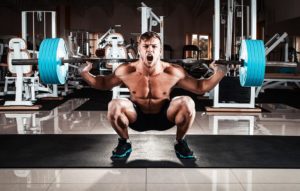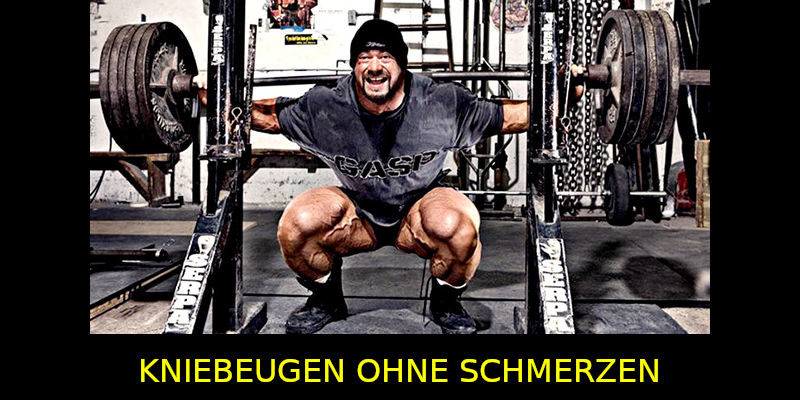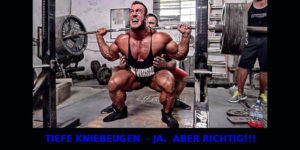Pain in the kneecaps and depth of the squats.
The squat has received a lot of praise and criticism over the past 50 years. Leading experts like Peary Rader, Bob Hoffman, Joe Weider, Joe Gold, John Balik, Tom place, Steve Holman, countless weightlifting coaches and winners as well as bodybuilding champions have recommended it as an ideal tool for strength and mass.
In the In the 1960s, however, many doctors claimed the squat would reduce the knees ruin. Unfortunately, this statement was quickly believed, that is what it was just about the personal opinion of doctors who never did weight training had. Fortunately, today you don't give up anything in medicine or sport Opinions. Today you have to provide evidence.
Studies on Squats
Dr. Sean Flanagan, Professor of Biomechanics at California State University, Northridge, recently spoke about Patello-Femoral Biomechanik * - the movement of the kneecap. He focused on two subjects. One of them was the claim that squats put strain on the kneecaps.
Dr. Flanagan spoke a much discussed topic Question to: Are full or half squats better for the kneecap?
You often hear in the studio that half squats are gentler. Most lifters experience little pain below the kneecap. You only have one because of the hours of hard training Tendinitis* in the knees. The same phenomenon occurs after excessive bench press in the shoulders.
Orthopaedic and Sports Physical Therapy“ von 2008. Dr. Powers erklärte, Flanagan zitierte einen Artikel von Orthopaedic and Sports Physical Therapy“ von 2008. Dr. Powers erklärte, Chris Powers aus dem „Journal of Orthopaedic and Sports Physical Therapy“ von 2008. Orthopaedic and Sports Physical Therapy“ von 2008. Dr. Powers erklärte, Powers erklärte, that the athlete bends his knee when doing the squat and thereby uses the forces a larger area of the kneecap is distributed when it is the femur touched. A squat that is not as deep creates less with the Kneecap and distributes the force over a smaller area. So she cares deeper squats for better with the kneecap.

We I mentioned the thickness of the cartilage behind the kneecap in a previous article: it is not even thick. It is thinner at the top and bottom and thicker in the middle.
In the The squat is the thickest point at maximum load Kneecap against the femur. At maximum load of the The thickest cartilage distributes the force on the kneecap.
If if we turn the concept around and look at the leg extension, it becomes clear that at fully extended knee the kneecap is loaded to the maximum. The full Knee extension on a leg extension machine puts the greatest strain on you thinnest part of the cartilage.
Kneecaps can, however, from others Reasons hurt.
Not all have the same shape. The depth of the groove in the femur falls different. Some knee injuries come from other sports, such as a wear and tear of the cartilage, unusual movements of the kneecap as well dislocated kneecaps. These factors are important in choosing the right one Squat also to consider.
Squats but right
Want If you do a lot of squats, first put the weight down and learn the technique properly. Give yourself the time to familiarize yourself with the technology get used to.
Angenommen, So far you've always done half the bench press. Would you suddenly lower the same weight to the chest? Of course not. You take less weight. The same applies the squat.
Science and studio have one another to do, even if not everyone wants to believe that. Let's use the best of both for less pain and better results.
*
* Patello-Femoral Biomechanics - Kneecap-Thigh Biomechanics
* Tendinitis – Tendinitis


7 comments
Comments are closed.